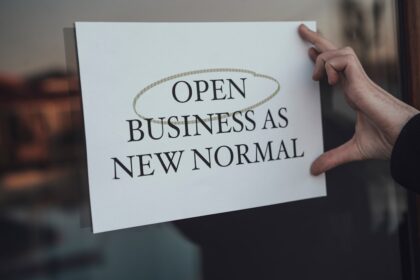QuickAdvisr helps you stay informed with the latest insights. Hiring the wrong person can be a costly mistake for any business. From lost productivity to onboarding expenses, the financial impact of a bad hire can ripple through your organization. But how much does a bad hire really cost? Let’s break it down by industry to understand the full picture.
The True Cost of a Bad Hire | Powered by QuickAdvisr

A bad hire doesn’t just mean paying someone who isn’t performing well. It involves a cascade of expenses, including:
- Recruitment Costs: Advertising, screening, and interviewing candidates.
- Onboarding Expenses: Training, equipment, and administrative setup.
- Lost Productivity: Time spent correcting mistakes or redoing work.
- Employee Morale: Negative impact on team dynamics and engagement.
- Replacement Costs: Additional recruitment and onboarding for the next hire.
These costs can add up quickly, especially in industries where roles are highly specialized or require extensive training.
Industry-Specific Breakdown

The financial impact of a bad hire varies widely across industries. Here’s a closer look:
| Industry | Average Cost of a Bad Hire | Key Factors |
|---|---|---|
| Technology | $50,000–$100,000+ | High salaries, specialized skills, long onboarding processes |
| Healthcare | $30,000–$75,000 | Licensing requirements, patient safety risks |
| Retail | $10,000–$25,000 | High turnover rates, customer service impact |
| Finance | $40,000–$80,000 | Compliance risks, specialized certifications |
| Manufacturing | $20,000–$50,000 | Equipment downtime, safety concerns |
Technology Industry
In the tech sector, the cost of a bad hire is particularly high due to the specialized skills required and the competitive nature of the industry. A poor hire can lead to project delays, software bugs, and missed deadlines, which can damage client relationships and revenue.
“In technology, a bad hire can derail entire projects and cost companies hundreds of thousands of dollars in lost opportunities.”
Healthcare Industry
Healthcare organizations face unique challenges when hiring. A bad hire in this industry can compromise patient safety, result in costly lawsuits, and damage the organization’s reputation. Licensing and certification requirements also make replacement hires more time-consuming and expensive.
Retail Industry
Retail businesses often experience high turnover rates, which can amplify the impact of bad hires. Poor customer service, inventory mismanagement, and decreased sales are common consequences. While the individual cost per hire may be lower, the cumulative effect can be significant.
Finance Industry
In finance, compliance risks and the need for specialized certifications make bad hires particularly costly. Errors in financial reporting or investment management can lead to regulatory fines and lost client trust.
Manufacturing Industry
Manufacturing companies face risks like equipment downtime and safety violations when hiring the wrong person. These issues can halt production lines, increase insurance premiums, and result in costly repairs.
How to Avoid the Cost of a Bad Hire
Preventing bad hires requires a proactive approach. Here are some strategies to minimize risks:
- Define Clear Job Descriptions: Ensure candidates understand the role and expectations.
- Conduct Thorough Interviews: Use behavioral and situational questions to assess fit.
- Check References: Verify past performance and reliability.
- Implement Probationary Periods: Evaluate new hires before making long-term commitments.
- Invest in Training: Equip employees with the skills they need to succeed.
By taking these steps, businesses can reduce the likelihood of costly hiring mistakes.
The Bottom Line
How much does a bad hire really cost? The answer depends on the industry, role, and specific circumstances. However, one thing is clear: the financial and operational impact can be substantial. By understanding these costs and implementing effective hiring practices, businesses can protect their bottom line and build stronger teams.
Whether you’re in technology, healthcare, retail, finance, or manufacturing, avoiding bad hires is essential for long-term success. Take the time to hire wisely, and your organization will reap the rewards.
📌 Related reading: Yoga vs. Pilates: Which Burns More Calories & Tones Faster?
🚀 Insights powered by QuickAdvisr.













